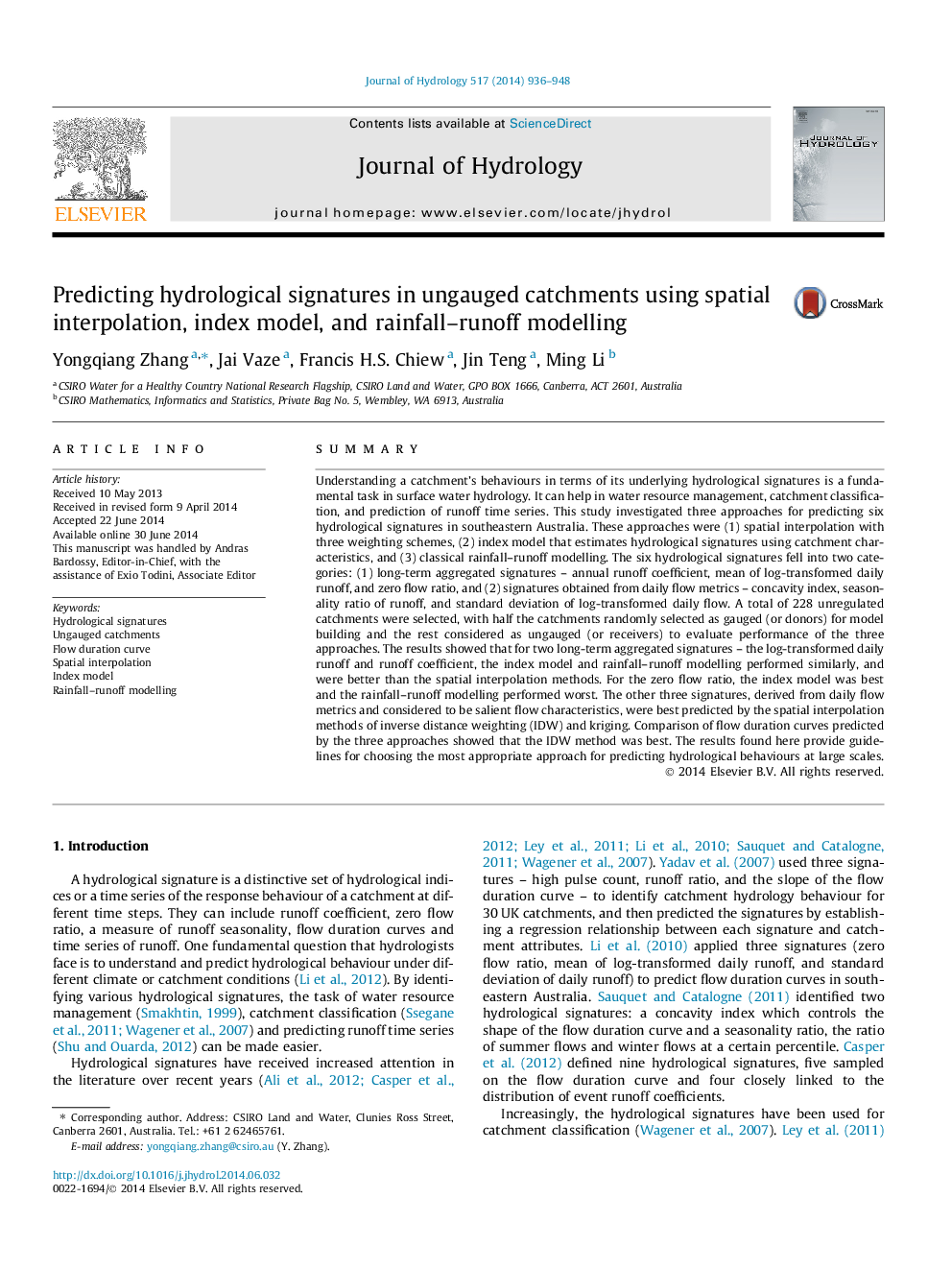| کد مقاله | کد نشریه | سال انتشار | مقاله انگلیسی | نسخه تمام متن |
|---|---|---|---|---|
| 6413065 | 1629931 | 2014 | 13 صفحه PDF | دانلود رایگان |

- Three approaches were investigated for predicting six hydrological signatures.
- Overall index model is best for predicting the high and low level signatures.
- The IDW interpolation performs best for predicting salient flow characteristics.
- Rainfall-runoff modelling is not suitable for predicting salient flow characteristics.
- The results provide guidelines for choosing the most appropriate approach.
SummaryUnderstanding a catchment's behaviours in terms of its underlying hydrological signatures is a fundamental task in surface water hydrology. It can help in water resource management, catchment classification, and prediction of runoff time series. This study investigated three approaches for predicting six hydrological signatures in southeastern Australia. These approaches were (1) spatial interpolation with three weighting schemes, (2) index model that estimates hydrological signatures using catchment characteristics, and (3) classical rainfall-runoff modelling. The six hydrological signatures fell into two categories: (1) long-term aggregated signatures - annual runoff coefficient, mean of log-transformed daily runoff, and zero flow ratio, and (2) signatures obtained from daily flow metrics - concavity index, seasonality ratio of runoff, and standard deviation of log-transformed daily flow. A total of 228 unregulated catchments were selected, with half the catchments randomly selected as gauged (or donors) for model building and the rest considered as ungauged (or receivers) to evaluate performance of the three approaches. The results showed that for two long-term aggregated signatures - the log-transformed daily runoff and runoff coefficient, the index model and rainfall-runoff modelling performed similarly, and were better than the spatial interpolation methods. For the zero flow ratio, the index model was best and the rainfall-runoff modelling performed worst. The other three signatures, derived from daily flow metrics and considered to be salient flow characteristics, were best predicted by the spatial interpolation methods of inverse distance weighting (IDW) and kriging. Comparison of flow duration curves predicted by the three approaches showed that the IDW method was best. The results found here provide guidelines for choosing the most appropriate approach for predicting hydrological behaviours at large scales.
Journal: Journal of Hydrology - Volume 517, 19 September 2014, Pages 936-948